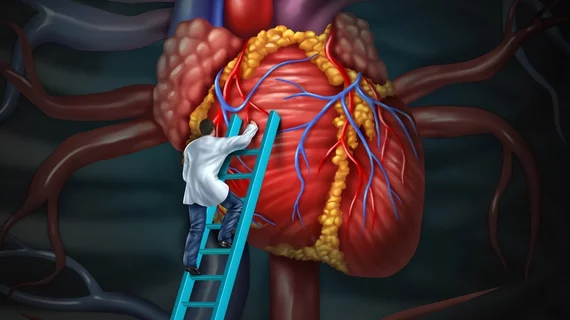American College of Cardiology, American Heart Association share new recommendations for managing valvular heart disease
The American College of Cardiology (ACC) and American Heart Association have published an updated guidance on the management of valvular heart disease.
The new document, published in both the Journal of the American College of Cardiology and Circulation, highlights the significant progress researchers and clinicians have made in this area in recent years.
“Current research and new technology continue to transform the treatment of heart valve disease, as updated lifestyle and medication guidance evolve, and less invasive procedures have replaced traditional surgery for many patients,” Catherine Otto, MD, co-chair of the guideline writing committee and director of the Heart Valve Clinic at the University of Washington School of Medicine in Seattle, said in a prepared statement.
One key update compared to prior guidelines revolves around when patients may be considered for transcatheter aortic valve replacement (TAVR). According to the guidance, TAVR may be viewed as the best option for certain patients with severe aortic stenosis following a shared decision-making process that focuses on the lifetime risks and benefits of each valve type and approach.
Some of the guideline’s many recommendations include:
- The use of non-vitamin K oral anticoagulants is now seen as “an effective alternative to VKA anticoagulation” when treating certain atrial fibrillation patients.
- Patients with severe valvular heart disease should undergo an evaluation by a multidisciplinary heart valve team before any intervention decision is finalized.
- All decisions when choosing between TAVR and surgical aortic valve replacement (SAVR) should focus on the presence of certain symptoms, patient age, the indication for intervention, predicted surgical risk, and other key factors.
“There is a knowledge explosion in medicine today, which can overwhelm the clinician," Rick A. Nishimura, MD, co-chair of the writing committee and a professor at Mayo Clinic in Rochester, Minnesota, said in the same statement. “This is particularly true in the area of valvular heart disease, in which multiple investigational trials are being rapidly performed and released, so that it becomes extremely difficult for an individual clinician to keep up with optimal treatments for each specific patient. The Valvular Heart Disease Guideline brings together experts in the field who review all the data and arrive at a consensus opinion for best treatment, outlined in the class recommendations.”
The full guidance can be found here and here. Numerous detailed summaries—including this one from David S. Bach, MD—are also available on the ACC website.

